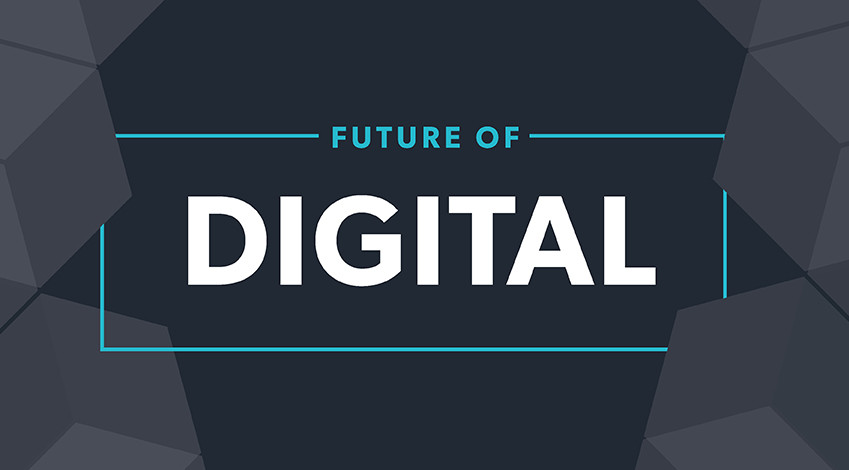As we know that importance of digital marketing is growing. This growth is a global phenomenon, not a local one. In fact, the geography which are still developing their local digital marketing expertise are witnessing huge opportunity in digital marketing and are aggressively working towards unlocking the potential. The ability to adopt new digital marketing tools, and exploring digital innovation into marketing and communication strategies has now become more critical than ever!
Globally there are a lot of aspiring marketers in general and digital marketers in particular are looking for a strategy that is near to perfect if not absolute perfect.
The process of adding up the sum of all digital activities both on internet and mobile doesn’t make a Digital Marketing Strategy.
We have observed that every brand big or small has fallen head over heels on strengthening their brand awareness, engagement, and reputation. The focus is also on lead generation as most of the marketers believe that digital marketing is the potent tool to generate qualified leads. I believe that most of the digital marketing experts who have experience in both B2B and B2C Sectors in various industries such as Banking, Healthcare, Retail, Real-estate, Ecommerce, Manufacturing, etc. would agree that use of digital marketing, and optimization of innovation in digital media into marketing and communication strategies is now more critical than ever. It helps strengthen brand’s visibility, and reputation.
Digital marketing strategy is the series of actions that help brand achieve desired goal(s) using online, or mobile marketing. The term ‘strategy’ to most of us might seem intimidating, few might even argue that why do we need digital marketing strategy when we are doing absolutely fine with our digital marketing exercise. A detailed look into the marketing plan of most of the brands will help us understand that they equate digital marketing with having a web presence and basic search engine optimization. In my view, digital marketing is not just having a web presence and basic search engine optimization, it is way beyond these basic activities. In-fact the definition of web presence and search engine optimization has also evolved over time.
It might sound to most of the digital marketers that digital marketing strategy is something very complex but building an effective digital strategy is not a complex exercise. It is just a plan of action to achieve a desired goal, or set of goals. It is important for digital marketers to understand that in an ever-evolving digital landscape, success in business can often depend on what brands do or don’t do in terms of marketing. It is also important to evaluate how marketers are executing digital marketing, and what tools they are using to evaluate the performance.
Digital Marketing Strategy Journey
It can be both an exciting and challenging act to figure out where to start the journey of digital marketing and, more importantly, what activity will have the biggest impact on business. In my view, digital marketing starts with web presence, and include host of other activities which help individual visit the website and engage with the brand. The core activities of digital marketing include, content marketing, search engine optimization, social media optimization, managing the mix bag of paid ads, influencer marketing, analytics, etc.
This journey of digital marketing is function of scale of your business, objective of the digital marketing activities, engagement level of the target group, and investment in the digital marketing plan. The digital marketing strategy might involve multiple goals but a well-defined, clutter free and simple way of thinking about strategy can help brand meet objectives.
A campaign that runs over the course of a couple of years doesn’t make it a digital marketing strategy
I believe, the question which we need to answer is how to build the ultimate digital marketing strategy? Is there a definitive approach to build a successful digital marketing strategy?
In my views, it is very easy to confuse your digital strategy with your digital marketing campaigns. Digital Strategy is the series of actions you take to help you achieve your overarching marketing goal. The process of adding up the sum of all digital activities both on the internet and mobile doesn’t make a Digital Marketing Strategy. Marketers need to embrace digital innovation and seize the opportunities it provides for marketing and communications on both platform – internet and mobile. Digital Marketing Campaigns are the building blocks or actions within your strategy that move you towards meeting that goal.
Perfecting Digital Marketing Strategy
For any good strategy, it is important to know what we want to achieve from the exercise. The digital marketing strategy is no exception. In the case of digital marketing strategy, we should also know “What should a perfect digital marketing strategy entail? “Hence, before we move ahead, it is important for us to answer a few basic questions (a sample list of questions):
- Why should digital marketing ever be used for your brand?
- Is increase in awareness among audience one of the key takeaway of the digital strategy?
- Do marketers care about increase in site visits, leads and sales?
- Are CXOs demanding the gain in market share?
- Is building brand awareness, engagement, and reputation the key to all digital marketing efforts?
The reasons of designing a digital marketing strategy can be one the above-mentioned reasons or may be combination of them. Irrespective of the scenario, the approach to design digital marketing for the organization and brand will change with the changing requirements but the basic will remain same.
For any good strategy, it is important to know what we want to achieve from the exercise.
I believe creating a perfect digital marketing strategy for brand, marketers need to perfect following components of Digital Marketing Strategy Framework – Situation Analysis, Objective setting, Strategy, Implementation and Analytics.
Situational analysis is the root analysis that has to be made for the answers to the very basic question Where is the brand right now? The situation analysis provides answer to the basic but important questions viz. industry and competitor analysis, customer insight. It helps to identify where we stand as a brand and what we need to do to win the digital marketing race.
The outcome of situation analysis helps us set the objective of digital marketing. The objective can be defined as one to understand the customer acquisition process, understand customer retention targets, set customer satisfaction targets, define positive sentiments metric, customer’s engagement metric, metrics of brand reach. The objective setting of brand can be sum total of one or all of the above-mentioned objectives
Strategy is the third stage of the Digital Marketing Strategy Framework. It highlights how and which actions marketers should perform to attain the set objectives. This is the stage where you perform segmentation, target and positioning based on customer profile. The evolved organization also plans of creating a digital marketing culture and content marketing culture at this stage. The digital marketing strategy is a function of what has to be done and how it has to be done to engage and attract target audience

The sub section of strategy is the tactics stage. The tactics decides which special tools of digital marketing – Search Engine Optimization, Social Media Marketing, Email Marketing, Pay Per Click advertising, etc. to use for the success of campaign. Tactics is the stage that breaks the big picture of strategy into smaller details. Tactics also ensures that we provide the right details before we implement the specific part of big strategy. Tactics is also an intermediate state between implementation and strategy. Implementation requires us to define a few basic elements before taking the campaign live. These basic elements also become the KPIs of the campaign and help us in campaign analytics.
It is important to define the metrics which is used to monitor campaign performance – web analytics, user experience review, customer engagement, customer satisfaction, conversion rate optimization, etc. These performance indicators also help us decide which special tools of digital marketing to focus on – Search Engine Optimization, Social Media Marketing, Pay Per Click advertising, etc. for the success of campaign.
From our decade of experience we want digital marketers to understand strategy first and then only learn the technical skills of digital marketing. A digital marketer with only technical skills and no understanding of how to apply them, won’t be equipped to manage and execute on client projects. A lack of strategy is a common problem we are seeing in the digital industry
– Neil Pursey, Founder of Webgrowth
If we are following the Digital Marketing Strategy Framework – Situation Analysis, Objective setting, Strategy, Implementation and Analytics to the core we also realize that a digital marketing strategy is based on the three basic principles of marketing strategy: how to differentiate a business from its competitors, how to target the message to the right audience, and how to communicate that difference.
Also Published at https://www.linkedin.com/pulse/digital-marketing-strategy-braj-mohan-chaturvedi-/




